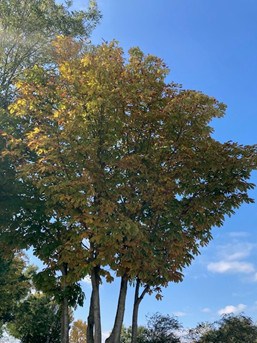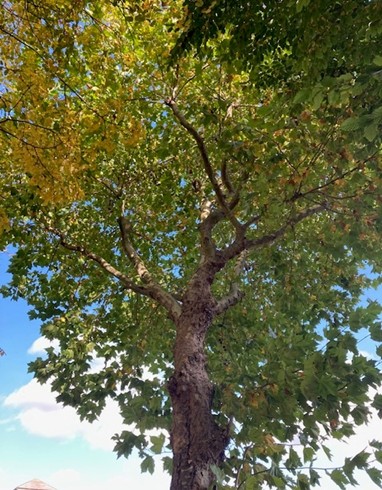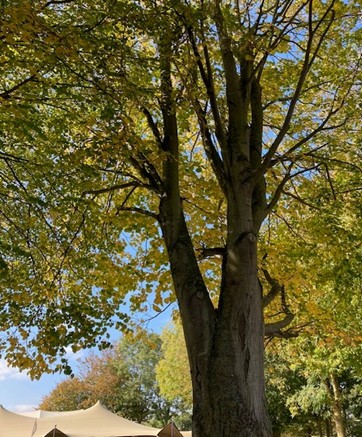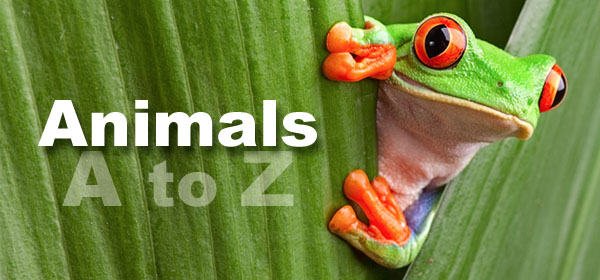All around us there are signs of the change in seasons, from the abundance of fresh fruit and vegetables as the harvest season peaks, to changes in the behaviour of animals as summer birds begin to migrate. My blog this week is going to be about focus on the change of season and what that might mean for some of our keepers and animals with feeding out browse.
Browse is what we call plant matter from various trees and shrubs that is considered safe for leaf eating animals to eat. Here at Wingham, we house quite a few exclusive browse feeders. Our giraffes, black howlers and colobus monkeys would all be considered exclusive browsers. We also have several other species that eat a lot of browse, such as our tapirs, orangutans, chimpanzees, red pandas and gibbons to name but a few.
The animals that eat the most amount of browse by a country mile if you hadn’t already guessed it is our four giraffes, they LOVE to eat leaves and lots of them. Eating up to 45 kilograms of vegetation every day, this is evident on the African savannah where they stretch their long necks to reach the leaves of the acacia trees. Their digestive system is specifically designed to digest large quantities of browse, but what does a giraffe do in a zoo environment where there are no acacia trees or no leaves on the domestic trees for half of the year?
Since giraffes in the wild primarily eat leaves, we should of course replicate this in captivity, however this is easier said than done. In practice it’s very difficult, near on impossible to get the quantities of fresh leafy browse that is needed for a group of giraffes, especially during wintertime. If we start to look at the trees around us now, you can see they are starting to turn in colour and fall off. So what do we do when the leaves have all fallen from the trees?
About 6 years ago now we started doing browse silage for the animals. Silage is a process of fermenting high moisture stored fodder which can be fed to ruminants, in our case at Wingham we use the trees that are grown on the grounds and our off site area. Species include willow, lime, horse/sweet chestnut, Italian/European alder, buddleia, hawthorn, hazel, ash, hornbeam, beech, poplar, elm, birch, maple and London plane.

Ash

Horse Chestnut

London Plane

Lime

Oak
While silaging is a time consuming process, it is extremely important to our animal care program. The process starts at the of end May through to July when the tree leaves are highly nutritious and before their chemical properties start changing to get the trees ready for cooler weather. We sustainably trim branches from species of trees that have been approved as safe and non-toxic. The process starts out as a mountain of tree branches that need to be hand cut into large animal bite sized pieces and then distributed into 30 gallon barrels. Only the leaves and pencil thin branches are silaged. The tree material is stamped down to eliminate as much air as possible and sealed, then the barrels are stored for 4-6 months with us opening the first barrels in January. Once opened, each barrel is inspected and approved for consumption before the contents are fed to any animal. This process is very time consuming but allows us to have properly processed browse material for our herbivores even in the cold winter months.
We need to fill at least 100 barrels to see use through the winter months, so you can imagine the time this takes to accomplish. If you look to your left when you come down the stairs from the orangutan’s indoor area, you will see where we store our silage barrels. As mentioned earlier, so many of our animals benefit from us doing silage, so really the pros outweigh the cons.
Another reminder that it’s a sure sign that autumn is here is to put our clocks back towards the end of this month. This happens in the UK at 02:00 BST on Sunday 26 October this year. Clocks going back is often considered the “better” clock change as we get an extra hour in bed.


